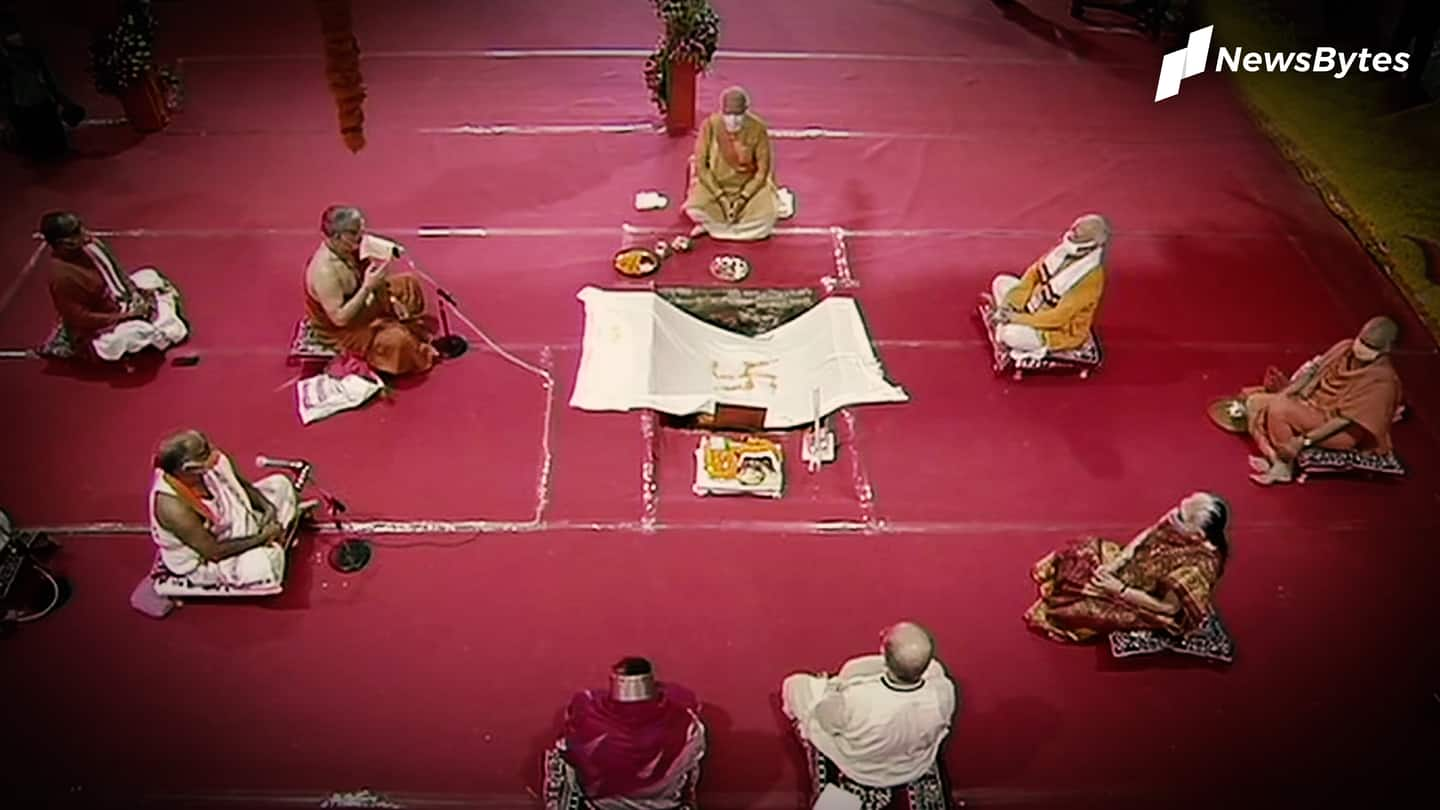
Ayodhya: PM Modi lays first brick for Ram Temple's construction
What's the story
Prime Minister Narendra Modi on Wednesday installed a silver brick at the Ram Janmabhoomi site in Ayodhya, Uttar Pradesh, a symbolic gesture that means the construction of a grand Ram Temple can begin.
The BJP leader left for Ayodhya this morning, his first visit in 29 years, and was received by Chief Minister Yogi Adityanath.
Read on for more details.
Background
Context: A sensitive issue reached its end, courtesy Supreme Court
The Ram Mandir issue reached a peaceful climax last year when the Supreme Court ordered the temple's construction at the disputed site. The top court also directed that 5 acres of land should be given for a mosque.
Notably, the verdict came 27 years after right-wing activists demolished the Babri Masjid, believed to have been built on the ruins of a temple where Lord Rama took human form.
Event
Trust, tasked with temple's construction, meticulously planned today's event
After SC's verdict, the Ram Janmabhoomi Teertha Kshetra Trust started preparations for the construction. For the groundbreaking ceremony, August 5 was selected.
However, considering the coronavirus-induced restrictions, the guest list was kept under 200.
Besides PM Modi and Adityanath, UP Governor Anandiben Patel, RSS Chief Mohan Bhagwat, and selected seers from across the country were invited.
Ayodhya got a makeover as well.
Details
After Hanumangarhi Temple, PM Modi participated in main event
Images from the shilanyas ceremony, showed the mask-wearing VIPs sitting at some distance from one another. The family of former VHP Chief Ashok Singhal was also present during the puja.
To note, before he visited the main site, PM Modi offered prayers at Hanumangarhi Temple. He also planted a Parijat sapling, considered as a divine plant, before the foundation ceremony.
Details
What will the grand temple look like?
As per plans, the temple will be built in the Nagar 'shaili' style. In this style, a temple tower is built over the sanctum. The planned temple will be much larger than the original design, approved by Singhal, who played a key role in the Ram Janmabhoomi movement.
While speaking to NewsBytes, architect Ashish Sompura said the temple will be one-of-a-kind.
Twitter Post
Before Lord Rama, PM Modi performed "sashtang pranam"
#WATCH Prime Minister Narendra Modi offers prayers to Ram Lalla, performs 'sashtang pranam' (prostration) at Ram Janmabhoomi site in Ayodhya pic.twitter.com/G6aNfMTsLC
— ANI (@ANI) August 5, 2020